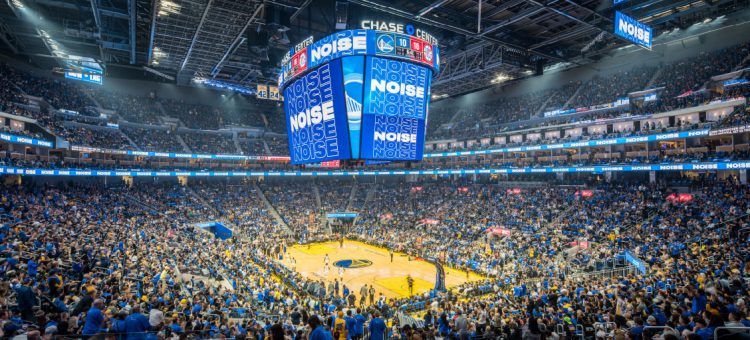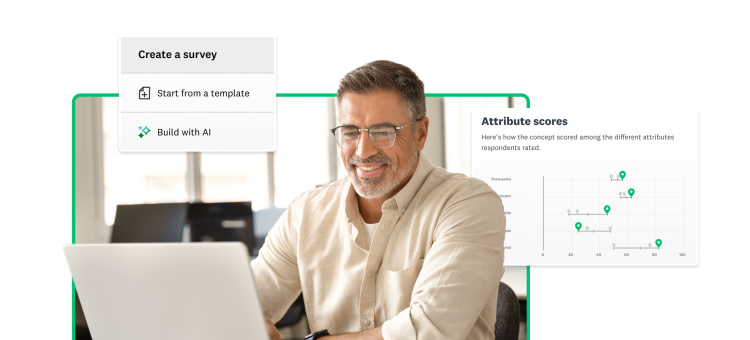When the Warriors moved into the brand new, state-of-the-art Chase Center in San Francisco, they saw an opportunity. As the owner and operator of the new building, the Warriors now had a chance to create a compelling fan experience—and they planned to exceed expectations.
With the transition to a new building, the Warriors evolved from just a basketball team to a diversified live entertainment company, hosting concerts, festivals, shows, and beyond. Holding more events than ever meant more opportunities to delight their customers.
“We’re in the business of delivering memorable experiences,” said Warriors President & Chief Operating Officer Brandon Schneider. “In order to turn someone into a fan, you really have to create this phenomenal experience. The game or concert are what drive people to Chase Center, but the incredible experience is what keeps them coming back.”
The Warriors didn’t take this responsibility lightly: they knew if they were going to deliver the best fan experience possible, they would need to keep a close eye on their customers’ expectations and desires.
“It is critical that we are able to get a pulse on what fans care about and understand our market so that we can optimize the fan experience and really differentiate our venue from all of the other entertainment options that are out there.”
Brandon Schneider, president and chief operating officer, Golden State Warriors
Ever the data-centric company, the Warriors began looking for a sophisticated experience management solution that could support the numerous in-depth research projects they had planned.
Fan feedback guides business strategy, post-pandemic safety measures
Having successfully used SurveyMonkey for over 5 years, the Warriors selected SurveyMonkey Enterprise to keep a pulse on the fan experience and gather regular feedback for a number of important initiatives.
Schneider and his team quickly got to work using the solution to gather input from fans, from email content preferences to what they wanted the in-game experience to look like. Staying in lock-step with their customers’ preferences wasn’t just about getting new ideas for the arena—it was also the best way to be certain their business strategy and investments would drive results.
Then the pandemic hit, disrupting the league and barring spectators from Chase Center for over 400 days. In early 2021, as the Warriors were preparing to safely welcome fans back to the venue, they redoubled efforts to not only understand what made fans feel safe but also what drove them to come back again and again.
The Warriors added SurveyMonkey Market Research solutions to their market research toolkit to uncover fan sentiment trends and inform their reopening strategy, as well as conduct some broader market research. The Warriors have a robust database of fans, but SurveyMonkey enabled them to reach people who weren’t current Warriors fans.
“We wanted a better understanding of what drives brand appeal,” said Charles Gao, senior manager of business strategy and analytics for the Warriors. “How do people perceive our brand health, our brand strength? We're also getting support on what fans are looking for, what non fans are looking for, and how we can better cater to their expectations and help drive our business, create a better experience, and grow the spotlight on the game of basketball.”
Some of the feedback has surprised the Warriors, highlighting the often unexpected insights that can only come when gathering feedback at scale.
For instance, an in-game experience survey sent out before the pandemic revealed that fans weren’t as invested in halftime performances as they’d assumed, instead using this time to walk around the concourse, buy food, and use the restrooms. As a result of this feedback, the Warriors introduced roaming jazz bands and set up several new activities around the concourse for fans to explore. Another survey revealed that the Warriors’ fan base was interested in more inclusive performances. In response, the team introduced alternative dance teams including junior, senior, and co-ed squads.
Each of these new initiatives takes resources to implement and maintain, and proving ROI can be difficult. SurveyMonkey helps the Warriors understand where to focus. Among the findings were that loyalty is driven not just by team performance but also by factors under the organization’s control, like team members’ involvement in branding initiatives, the energy in the arena itself, and broadcast of local community games. That was a key finding, because past branding studies had taken place when the Warriors were back-to-back NBA champions and arguably one of the best teams of all time.
“We were able to see how much we need to really lean into the other levers here that control the brand, so this was pretty insightful,” Gao said.
When it came to planning the post-pandemic reopening, SurveyMonkey helped the Warriors learn that fans in the Bay Area had high expectations for COVID-19 precautions.
“It really helped us from a strategic standpoint to understand where the bar was and set out the aspiration of being the safest venue in the world,” Gao said. “I think that's what we've been able to accomplish, but it started with that understanding of what we needed to do.”
New discoveries and actionable insights boost the fan experience
Rather than sticking to the same tried-and-true tactics for engaging fans, the Warriors were ready to break the mold. Using SurveyMonkey to keep a pulse on what customers care about, the team has successfully introduced new performances, new concourse additions, and a recent rebrand, and its plans to reopen safely post-pandemic were met with enthusiasm by Bay Area residents. By challenging their own assumptions and relying on data rather than hunches, the Warriors have been able to pivot their strategy with confidence.
Whether to confirm a hypothesis or discover new ideas, gathering regular feedback enables the Warriors to steer their business in the right direction, grounded in data.
“One of the most powerful things about SurveyMonkey is its versatility,” Schneider said. “It's not just useful for one vertical or one area of the business. It's something that we can apply for all of our partners through all aspects of our business.”



